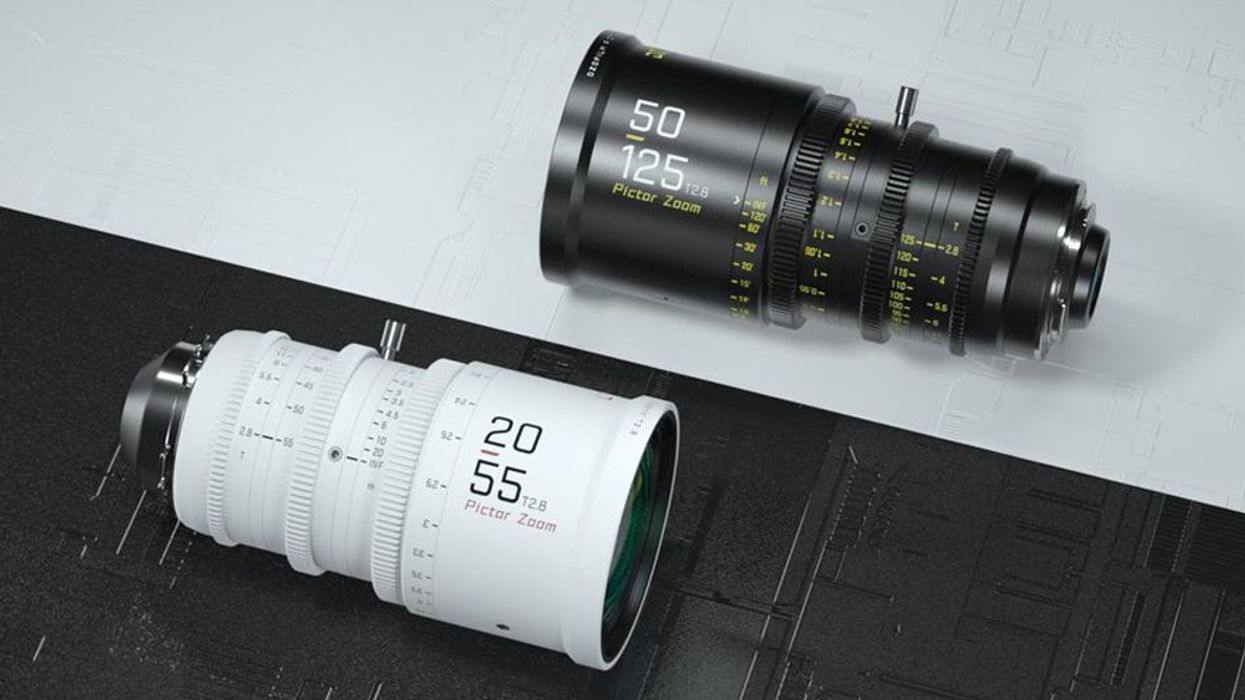Need Affordable Super 35 Glass? DZOFILM Just Unveiled 2 New Cine Zooms
Lens creator DZOFILM goes Super 35.

After weeks of teasing new lenses via the Gram, the Chinese company DZOFILM has officially announced two cine lenses in its new Pictor Zoom series. The 20-55mm T2.8 and 50-125mm T2.8 cover Super 35 image sensors and are equipped with interchangeable mounts for PL and Canon EF.
You might be familiar with the company's Linglung line for Micro Four Thirds sized sensors that includes a 10-24mm T2.9 and 20-70mm T2.9. Both of those lenses tout minimal lens breathing, natural color rendition, a smooth bokeh, and a standard 0.8 mod gear pitch. The Pictor Zooms aim to follow that tradition for Super 35 sensors, covering a 31.5mm image circle.
The 20-55mm T2.8 and 50-125mm T2.8 have fixed T2.8 aperture across its zoom range with a 16 blade aperture design that produces a very soft, round bokeh. DZOFILM says the lenses create high contrast images with neutral color rendition. Lens breathing is also said to be minimal when zooming. Based on the sample footage, the lenses do have a clean, not overly sharp feel. Skin tones look pleasing as well.
Not much is divulged about the build quality of the lens, but both lenses appear to be made from a type of aluminum housing robust enough for the pitfalls of production. Both Pictor Zooms have a minimum focusing distance of 2.62 feet (0.8 m) and carry over mechanical traits of the Linglung line, sharing the 270° focus throw and 0.8m mod gear pitch. The 95mm front diameter is compatible with standard matte boxes, and you can attach 86mm filters to the front of the lens element.
Compact in size at around 3.5 lbs (1.6 kg) for the 20-50mm T2.8 and 3.74 lbs (1.7 kg) for the 50-125mm T2.8, they're ideal for documentary work or the run and gun filmmaker. Better yet, the lenses come standard in PL mount, but DZOFILM includes an extra EF bayonet in the kit, allowing you to change the mount out when shooting Canon EF.
As for cost, DZOFILM develops some of the least expensive cine lenses on the market. Individually, the 20-50mm T2.8 retails for $2,289 and the 50-125mm T2.8 is at $2,489. You can also catch a discount at a bundle price, which includes either an all-black color scheme at $4,499 or an all-white option for $5,399.












